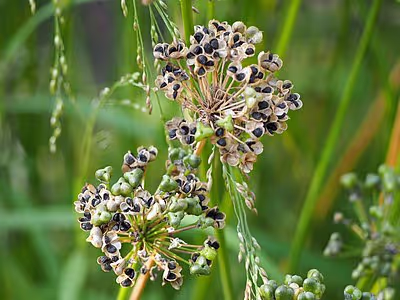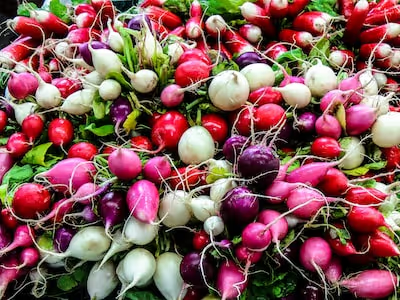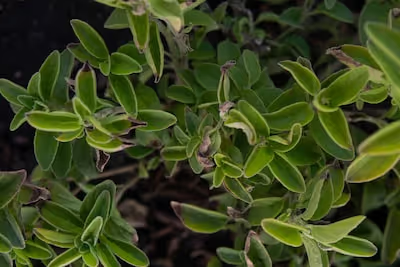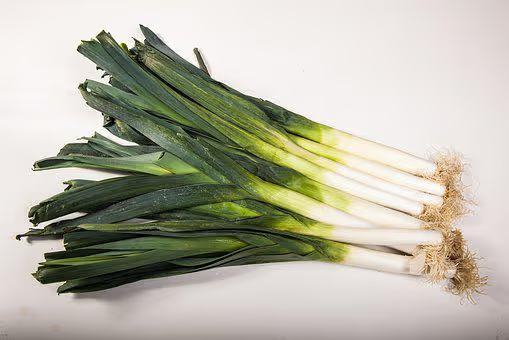Growing Butternut Squash: A Simple Guide for Rich Harvests
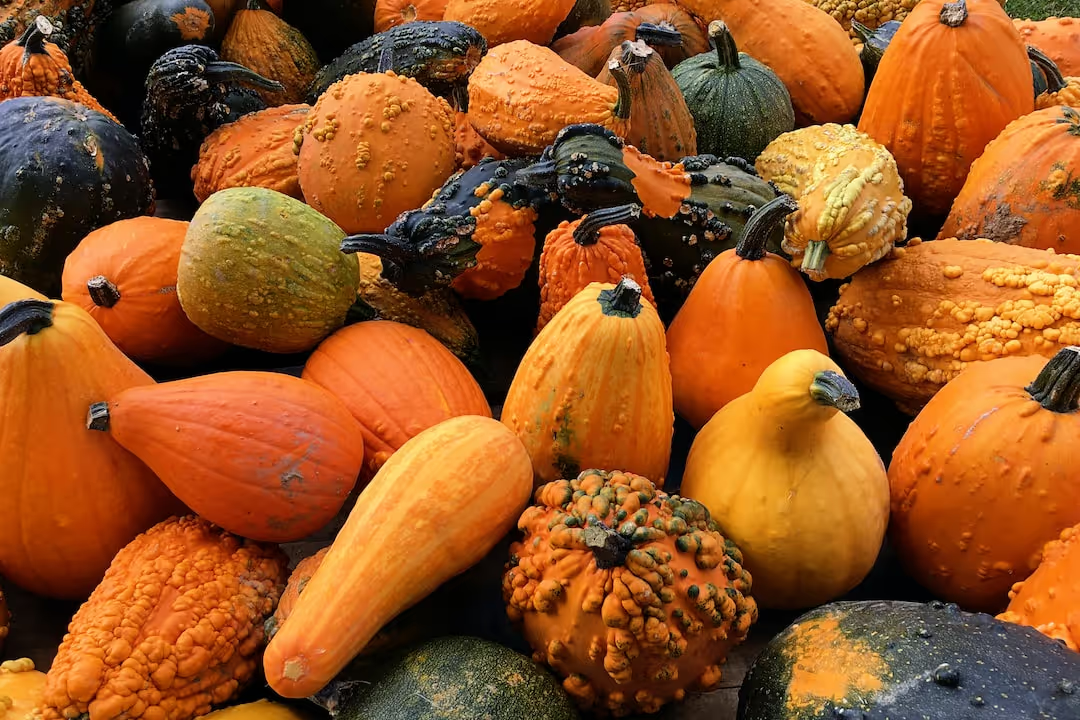
Growing Butternut Squash
Growing butternut squash plants begins with rich, well-drained soil, abundant sunlight and ample space for sprawling vines. Sow seeds directly outdoors once the soil warms above 60°F, or start seeds indoors three weeks earlier to gain a jumpstart on growing butternut squash. Water deeply once a week, offer balanced compost to nourish vigorous growth, and soon you'll harvest nutty, versatile squash ready for roasting, soups—or whatever culinary magic you plan to cook up.
Cheatsheet: Rich Harvests from Butternut Squash
🌱 Choose Prime Location
- Full sun (6-8 hrs)
- Well-drained, loamy soil (pH 6.0–7.0)
- Min. 70°F/21°C soil temp for sowing
🧑🌾 Sowing & Spacing
- Direct sow after frost or start indoors 3-4 weeks prior
- Plant seeds 1" (2.5 cm) deep, 36–48" (90–120 cm) apart
- Rows 4–6 ft (1.2–1.8 m) apart
💧 Water & Feed
- 1–1.5 in (2.5–4 cm) water/week
- Mulch to retain moisture
- Fertilize: compost or balanced NPK (5-10-10)
🦠 Pest & Disease Control
- Handpick squash bugs, inspect leaves
- Use row covers early
- Rotate crops yearly
🍃 Pollination Boost
- Grow pollinator flowers nearby
- Hand-pollinate if fruit set poor
🔪 Harvest & Cure
- Pick when skin hard, tan, stem browns (avg. 90–110 days)
- Cut with 2" (5 cm) stem
- Cure 10–14 days, 80–85°F (27–29°C); store at 50–55°F (10–13°C)
- Yield: 3–6 squash/plant
🥗 Nutrition & Self-Sufficiency
- 1 cup cooked: 457% RDA vitamin A, 15% potassium
- Stores up to 6 months
- Supports food security
🧰 Tools and Products You'll Need
- Butternut squash seeds
- Compost or balanced fertilizer
- Trowel or dibber
- Mulch
- Pruning shears
- Watering can/hose
- Row cover (optional)
- Gloves
- Select sunlit site with fertile, loose soil
- Sow seeds or transplants after last frost
- Water regularly, mulch around plants
- Feed every 3–4 weeks
- Monitor, handpick pests, rotate location yearly
- Encourage pollinators or hand-pollinate
- Harvest mature fruits before frost
- Cure, then store in cool, dry place
-
Growing Butternut Squash: Site, Soil, and Timing
I learned fast that Growing Butternut Squash rewards heat, space, and discipline. Give it sun all day, soil that drains, and it pays you back in sweet, nutty fruit that stores for months.
Plant after the last frost once soil hits 65 F or warmer, about 18 C. I wait for 70 F or 21 C at 2 inches deep, which shortens germination and jump-starts vigor (University of Minnesota Extension).
Soil Prep That Actually Moves the Needle
Butternut is Cucurbita moschata, a heavy feeder that loves rich, living soil. I work in 2 to 3 inches of compost, then rake in a slow-release organic fertilizer with a balanced N-P-K, following the label.
Target a pH near 6.2 to 6.8 and fix drainage before planting. In clay, raised rows or mounded hills improve oxygen and root speed (Penn State Extension).
Seed vs. Transplants
Direct sow seeds 1 inch deep, 2 to 3 per spot, then thin to the strongest. If I need a head start, I use 3 to 4 week old transplants in roomy cells so roots don’t spiral.
Don’t harden off lazily. Give seedlings a week of gradual light and wind so they don’t stall after planting.
Spacing, Trellising, and Airflow
On the ground, I space plants 3 to 4 feet apart, with 6 to 8 feet between rows, about 90 to 120 cm and 1.8 to 2.4 m. On trellis, I plant 18 to 24 inches apart, 45 to 60 cm, and use cattle panel or a stout A-frame.
Fruits on trellis get fabric slings once they hit softball size. Good airflow dodges powdery mildew and speeds drying after rain.
Water and Feeding That Produce Dense, Sweet Fruit
Squash drinks regularly. I keep the soil evenly moist and switch to drip to keep leaves dry and disease in check.
Target about 1 to 1.5 inches of water per week, 25 to 38 mm, adjusting for heat and soil type. Source: University of Illinois Extension.
At vine run, I side-dress a little nitrogen along the drip line, then again at early fruit set. Overdo the nitrogen and you’ll grow a jungle with fewer fruits.
Flowers, Pollination, and Fruit Set
Butternut bears separate male and female flowers. Males arrive first; females carry a tiny squash at the base.
I release row cover when the first female opens so bees can work the patch. On quiet mornings, I hand-pollinate with a soft brush for belt-and-suspenders insurance.
Remove protective covers once plants start to flower so pollinators can access blooms. Source: USDA and multiple Extension guides.
Training, Mulch, and Strategic Pruning
I train vines in one direction to keep aisles open and fruit off wet soil. A 2 to 3 inch layer of straw or shredded leaves suppresses weeds and evens out moisture.
If I want fewer, larger squash, I limit each vine to 3 or 4 fruits and tip the vine one leaf beyond the last fruit. Simple, effective, and it concentrates sugars.
Pests and Diseases I Actually See, and What Works
- Squash vine borer: Butternut, as a moschata type, tolerates borers better than pepo squash. I still use row cover before bloom, wrap lower stems with aluminum foil, and plant a week after peak moth flight when possible (University of Missouri Extension).
- Squash bugs: Check the undersides of leaves for bronze eggs and crush them. A shop vac on cool mornings pulls adults fast.
- Cucumber beetles: Yellow sticky cards and blue hubbard trap plants pull pressure away from the crop. Floating row cover helps until flowering.
- Powdery mildew: Choose PMR types, give space, water at the base, and prune a few crowded interior leaves. If it flares, sulfur or potassium bicarbonate sprays can slow it (Cornell Cooperative Extension).
Harvest, Curing, and Storage That Keep Flavor Climbing
I harvest when rinds are fully tan with no green streaks and stems turn corky. A thumbnail should not dent the rind.
Cure at 80 to 85 F, 27 to 29 C, for 10 to 14 days with airflow. Store at 50 to 55 F, 10 to 13 C, with moderate humidity for several months. Source: University of Minnesota Extension.
Always cut with 2 inches, about 5 cm, of stem attached. Fruit without a stem invites rot in storage.
Top Butternut Varieties I Trust
- Waltham Butternut: Classic flavor, high yields, about 100 to 110 days. It sets the baseline for storage and soup quality.
- Butterscotch PMR: Early at about 85 to 90 days, small fruits, and strong powdery mildew resistance. Great for short seasons and trellises.
- Honeynut: Mini butternut with concentrated sweetness and high brix. Developed by Cornell breeders with cooks in mind.
- Butterbush: Compact plants for small gardens and containers. Fewer fruits, easy harvests.
I grow one keeper, one early, and one small-fruit type each season. It spreads risk and smooths the harvest curve.
Growing Butternut Squash vs. Close Cousins
- Butternut vs. Delicata: Butternut stores longer and shrugs off borers better. Delicata wins on speed and eat-the-skin convenience.
- Butternut vs. Kabocha: Butternut is steadier in variable summers. Kabocha can hit knockout texture but needs more heat and patience.
- Butternut vs. Tetsukabuto: Butternut is easy to pollinate and reliable. Tetsukabuto is a storage beast with remarkable flavor, though it needs a compatible pollinizer.
Shopping List: Gear That Earns Its Keep
- Drip kit with pressure regulator: Even moisture, cleaner foliage, fewer disease problems.
- Insect netting or light row cover: Keep beetles and vine borers off until bloom.
- Soil thermometer: Plant by temperature, not by date.
- Sturdy trellis panels: Cattle panel or 4 by 4 inch mesh, with soft slings for fruit on vertical setups.
- Mulch: Clean straw or leaf mold to stabilize soil and smother weeds.
- Organic fertilizer: Balanced pre-plant feed and a nitrogen side-dress for vine run.
Common Mistakes and Quick Fixes
- Planting into cold soil: Wait for 65 to 70 F, 18 to 21 C, and use black plastic or landscape fabric for early warmth.
- Overwatering during ripening: Ease up once fruits size, or flavor washes out.
- Leaving row cover on during bloom: Remove it or hand-pollinate daily.
- Letting vines sprawl into shade: Redirect weekly so leaves stay in sun and fruit colors up evenly.
Season Extension That Works
On cool sites, I pre-warm beds with black plastic two weeks before sowing. Low tunnels with clear film in spring, then insect netting before bloom, stretch the season cleanly.
In heat waves, I water early morning and add light shade cloth in the afternoon. It prevents blossom drop and keeps fruit set steady.
Field Notes and Flavor Payoff
My best butternut came after I capped each vine at four fruits and fed the soil, not the plant. The brix jumped, the texture turned silky, and the soup needed less cream.
Give it heat, give it room, and let bees write the last chapter. The pantry shelves will do the rest.
References: University of Minnesota Extension, Penn State Extension, Cornell Cooperative Extension, University of Illinois Extension, USDA resources, and breeder notes from reputable seed firms.
Frequently Asked Questions about Growing Butternut Squash
How much sunlight does butternut squash require?
Butternut squash plants thrive best in full sun conditions, meaning at least 6 to 8 hours of direct sunlight daily. Adequate sunshine promotes vigorous growth and healthy fruit production.
What type of soil promotes healthy butternut squash?
Rich, well-draining soil with plenty of organic matter encourages optimal growth. Aim for a soil pH between 6.0 and 6.8, and add compost or aged manure before planting to supply essential nutrients.
When should I plant butternut squash seeds?
Sow seeds directly outdoors once all risk of frost has passed and soil temperatures reach at least 60°F (16°C). For regions with shorter growing seasons, begin seeds indoors 3–4 weeks before transplanting outdoors.
How far apart should butternut squash plants be spaced?
Provide each plant ample room by spacing seeds or seedlings 3 to 4 feet (90–120 cm) apart in rows approximately 6 feet (180 cm) apart. Proper spacing allows healthy air circulation and prevents disease.
How often do butternut squash plants need watering?
Water plants deeply once per week, providing around 1 inch (2.5 cm) of water. Avoid wetting foliage to minimize disease risk. Consistent moisture helps fruits grow evenly and prevents blossom-end rot.
What are common pests affecting butternut squash, and how do I control them?
Common pests include squash bugs, cucumber beetles, and squash vine borers. Inspect plants regularly and remove pests by hand or apply organic solutions like neem oil or insecticidal soap to reduce pest populations.
When is the best time to harvest butternut squash?
The fruit is ready for harvest when the rind hardens fully, turning a uniform tan color, typically 110–120 days after planting. Cut carefully from the vine, leaving a short stem attached, and cure in a warm, dry spot at 80–85°F (27–29°C) for two weeks to extend storage life.
Growing Butternut Squash rewards patience and a bit of sweat. Start with rich soil, steady moisture, and room to sprawl. Give your plants sunlight and they’ll give you flavor-packed fruit that keeps well through winter. Watch for powdery mildew and squash bugs—don’t let them get the upper hand. Harvest when skins harden and stems turn brown. Store in a cool spot and you’ll taste summer long after the leaves have fallen. If you’re feeling adventurous, try something new—like growing Silk Squash—to keep your patch interesting. In the end, a basket of homegrown butternut squash is proof that good food starts with dirt under your nails and a little know-how.
The Homesteader's Guide to Butternut Squash: Self-Sufficient Harvesting and Storage
Smart Planting for Sustained Harvests
- Succession Sowing: Plant batches 3 weeks apart for continuous autumn harvests.
- Interplanting Strategy: Sow squash among corn or pole beans to save space, enhance pollination, and maximize garden yield.
- Soil Nutrient Cycling: Rotate butternut squash annually with legumes and leafy greens to naturally replenish soil nitrogen and balance nutrient uptake.
Water-Efficient Butternut Growth
- Mulch Deeply: Layer 2-3 inches (5-7.5cm) of straw around plants to retain moisture, suppress weeds, and regulate soil temperature.
- Drip Irrigation Advantage: Install drip irrigation lines beneath mulch for targeted water delivery, reducing overall usage by up to 50%.
- Rainwater Harvesting System: Set up rain barrels to collect seasonal rainfall, providing sustainable irrigation water free from chemicals.
Natural Pest Control Tactics
- Beneficial Companion Plants: Marigolds, dill, and radishes deter squash bugs and vine borers naturally.
- Manual Inspection Routine: Inspect leaf undersides weekly; physically remove and destroy eggs and pests promptly.
- DIY Pest Deterrent: Mix equal parts water, dish soap, and neem oil; spray thoroughly every two weeks for organic pest mitigation.
Nutrient-Dense Storage for Year-Round Use
- Ideal Harvest Timing: Harvest butternut squash once vines dry and skins resist fingernail pressure to maximize shelf-life.
- Optimal Cure Technique: Cure harvested squash at 80-85°F (27-29°C) in low humidity for 10-14 days to harden rind and boost flavor.
- Long-Term Storage Conditions: Maintain storage space temperatures at 50-55°F (10-13°C) in consistent low humidity (50-60%) to keep squash edible and nutrient-rich for up to 6 months.
Sustainable Butternut Nutrition
Rich in beta-carotene, fiber, vitamin C, potassium, and magnesium, butternut squash supports immune health, vision, digestion, and heart function—essential for year-round homestead nutrition.
Find out which plants will thrive in your garden!
Answer a few fun questions and get custom plant recommendations perfect for your space. Let’s grow something amazing together!

start your season
